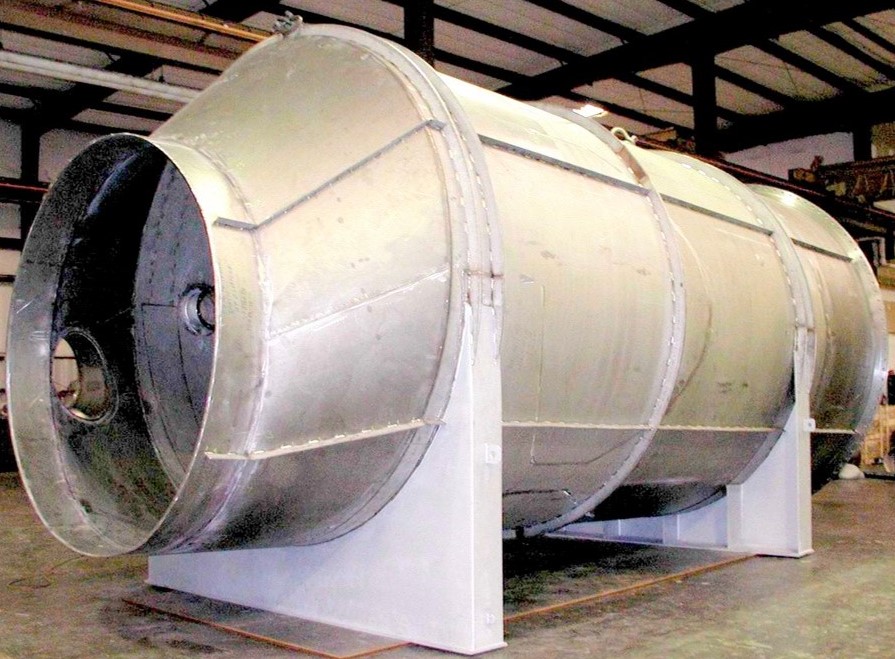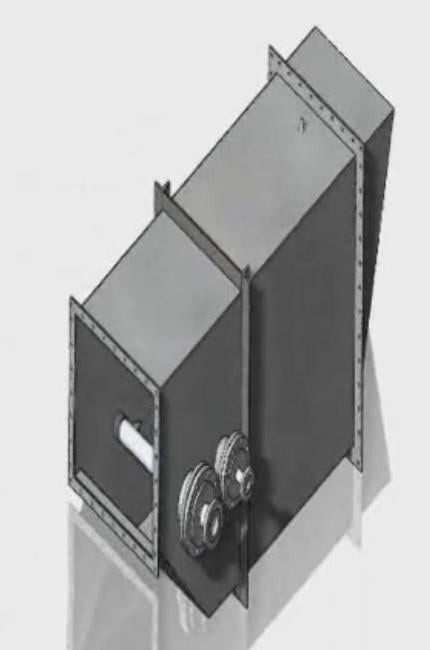Quencher
The Envitech quencher is a proprietary design that uses makeup water and a low-pressure-drop Venturi to cool hot gases by evaporating water into the gas. The Venturi provides turbulence to atomize the makeup water and saturate the gas while also collecting large particulate and absorbing acid gases. High turbulence provides an effective means to saturate the gas over a broad turn-down range.
Water is re-circulated in the Venturi section through open pipe injection ports with large orifices to eliminate nozzle fouling and reduce maintenance. Capturing and removing large particulate minimizes the potential for plugging downstream packed bed absorbers, condensers, or entrainment separators.

Theory
Direct contact quenchers add water directly into the gas stream. Heat in the gas is used to heat and evaporate water, which reduces the temperature of the gas, but raises its humidity and its inherent wet bulb temperature. When the dry bulb temperature of the gas drops to the wet bulb temperature of the gas, no further heat transfers from the gas to the water, as there is no further capacity in the gas to absorb water. The system is in thermal equilibrium. The temperature of any remaining water is the same temperature of the gas. The process is called adiabatic saturation, where no heat is assumed lost to the environment. The bulk of the heat transfer is typically via evaporation as the latent heat of evaporation is much higher than the heat capacity of the water. All heat transfer occurs as a result of water evaporation and gas cooling.
The exit temperature of a direct contact quencher is based primarily on two factors: the temperature of the gas, and the initial water content of the gas. A higher gas temperature requires more evaporation to cool the gas. More evaporation raises the wet bulb temperature. The initial water content of the gas sets the initial wet bulb temperature of the gas. The higher the initial wet bulb temperature, the higher the final wet bulb temperature.
If recirculated water is used in the quencher, the recirculated water will be at the wet bulb temperature, and heat transfer will be solely via evaporation. When re-circulation is employed, excess water does not influence the wet bulb temperature.
Application
The Envitech quencher has been used in over 200 high temperature thermal processes including medical, hazardous, and industrial waste incinerators, thermal oxidizers, electric arc and blast furnaces, kilns, roasters, recovery boilers, pyrolizers, and gasifiers. These processes are found in chemical plants, oil refineries, secondary lead smelters, geothermal plants, copper mines, ceramic tile manufacturing, mineral processing facilities, purified terapthalic acid (PTA) plants, sulfite pulp mills, and waste-to-energy facilities.
The Envitech quencher can handle temperatures as high as 2,200oF. Available materials include T304, T316, AL6XN, Hastelloy C276, Zeron 100, and Alloy 20. The quencher orientation can be designed with a vertical, down flow or a horizontal arrangement.



